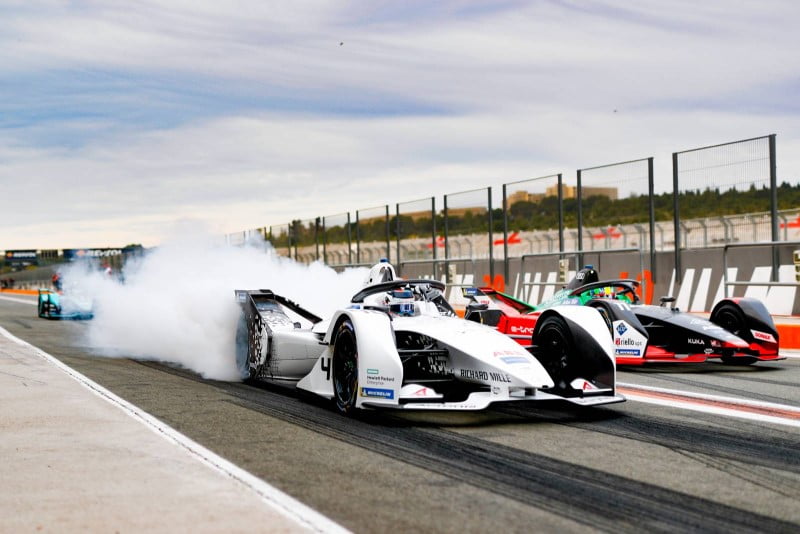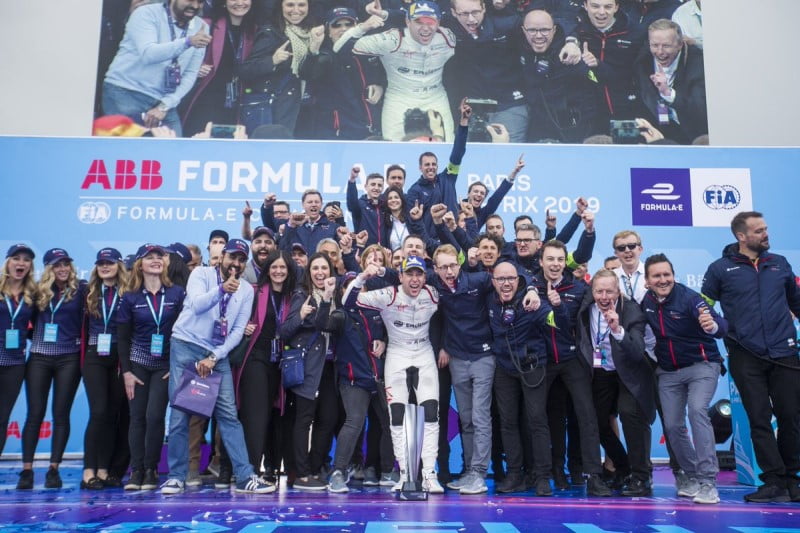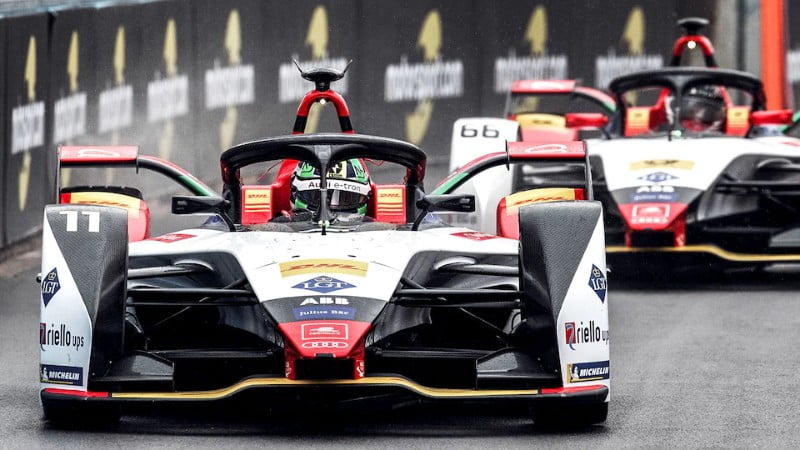- Even though Formula E is classified as a motorsport series, almost everything about it is un-classic motorsport series like.
- In its six years, the series has grown in size and stature as has the driver talent it has attracted.
- Formula E’s objective to race on the city streets is to take motorsport to the masses and make it more accessible.
For motorsport fans, it is that time of the year again, as winter nears, the popular and more historic racing series – Formula 1 and MotoGP, draw to a close. But for the sixth year in succession, fans will have the FIA Formula E Championship keeping them company as 24 all-electric racing cars powered by renewable energy go racing on the streets of world famous cities. For those who want to get up-to-pace for the 2019-20 Formula E season, this post will serve as a quick guide to what’s new this season.
Soon. pic.twitter.com/SnQrGIQ7Vd
— ABB Formula E (@FIAFormulaE) November 4, 2019
Why Formula E is so unique
Even though Formula E is classified as a motorsport series, almost everything about it is un-classic motorsport series like. Yes, there are teams who manufacture cars and hire drivers to race them, but that’s about where the similarity ends. Here are four reasons why Formula E is so unique:
First, and as most already know, the cars are all-electric and are powered by 100 percent renewable energy. Second, the calendar runs in the typical ‘off-season’ of motorsport. This scheduling helps it attract some of the best drivers from other series while also feeding the withdrawals faced by fans and media alike. Third, Formula E races on the streets, encouraging teams to use as much road-specific technology as possible, like the tyres, for example. Fourth, the racing weekend format including the format of the qualifying and race itself. In all, Formula E is a refreshing change in the world of motorsport.
Formula E Manufacturers
When Formula E started their electric racing journey six years ago, one often joked that the series had more manufacturers competing than fans watching. In fact, Formula E is possibly be the only single-class series in the world to have eight renowned car manufacturers competing together. For the 2019-20 Formula E season, Porsche and Mercedes will join the already illustrious list of global brands such as BMW, Jaguar, Mahindra, Audi, DS Automobiles and Nissan. In all, with 12 competing teams, 2019-20 will be Formula E’s largest grid since the inception of the series.
Jean-Eric Vergne Trying To Be The Lewis Hamilton Of Formula E
Porsche created a stir in the world of motorsport when they quit the World Endurance Championship (WEC) after winning the team title in 2017. The reason? They wanted to focus all their motorsport efforts on Formula E. After spending two seasons observing and learning from their rivals, it will be interesting to see how Porsche lives up to expectations. As for Mercedes, their planned takeover of HWA Race Lab this season means that they will start their first season as a fully-blown manufacturer. Mercedes is the only manufacturer in the world that has committed to dual operations – in Formula 1 and Formula E. Will the Silver Arrows be able to dominate Formula E just as they do in Formula 1?
Apart from the Teams’ Championship, the battle between the German manufacturer teams will be one of the sub-stories to follow. Audi, BMW, Porsche and Mercedes will renew their historic rivalries with Mercedes’ Team Principal Ian James saying that the multi-German rivalry will definitely add to the spectacle of the series.
We’ll be back. 22.11.19 ? #TerminatorDarkFate pic.twitter.com/gppPQFrMtp
— ABB Formula E (@FIAFormulaE) October 25, 2019
The Drivers
In its six years, the series has grown in size and stature as has the driver talent it has attracted. Unfairly, Formula E was initially regarded as a racing series that employed discarded or retired Formula 1 drivers. After all, Jean-Eric Vergne, Lucas di Grassi, Stoffel Vandoorne, Sebastian Buemi, Jerome d’Ambrosio are only some of the names who entered Formula E after unsuccessful attempts in Formula 1.
For the 2019-20 Formula E season, there’s a host of world champions from other series who will join the veterans. Nyck de Vries (reigning Formula 2 champion), Brendon Hartley (World Endurance Champion, 2015 & 2017) and James Calado (2017 GT World Endurance Champion & winner of the 2019 24 Hours of Le Mans) will be the ones to watch out for. Neel Jani, who has tasted multiple success with Porsche in the WEC, returns to the series this season as a Porsche driver. For Indian motorsport fans, Mahindra Racing will field an unchanged driver line-up of Jerome d’Ambrosio and Pascal Wehrlein.
Jean-Eric Vergne made history last season after becoming the first driver to be crowned the Formula E Champion twice and that too in back-to-back fashion. Given how closely contested each of the last six championships have been, it would be absolutely impossible to place your bet till at least two-thirds of the season is concluded. The trio of Vergne, Buemi and di Grassi are veterans of the series and have been the most consistent performers. It would be interesting to see how quickly some of the debutants fare, their immediate challenge being adjusting to the condensed racing program and limited track time at each race.
The fastest lap (1m15.087s) at the @FIAFormulaE test in Valencia, Spain, was posted by @maxg_official (BMW I Andretti Motorsport). 23 of the 24 cars bettered last year’s benchmark time!#ABBFormulaE #MichelinFormulaE pic.twitter.com/hC5JyCNEbK
— Michelin Motorsport (@Michelin_Sport) October 23, 2019
New venues this season
Formula E’s objective to race on the city streets is to take motorsport to the masses and make it more accessible. However, this poses a different challenge when it comes to establishing a stable calendar for every season. There are venues that get added, replaced and dropped time and again for logistics and political reasons. For the 2019-20 Formula E season, South Korea and Indonesia are new on the series’ calendar while Switzerland has been dropped. Hong Kong, a city that has hosted an ePrix since 2016, will be replaced with Marrakesh due to the ongoing protests. The series finale (a double header) will be held in London, a city that makes a comeback on the calendar with a brand new racing venue.
The Formula E calendar stretches from the last week of November (2019) till the last week of July (2020) and will host 14 races across 12 venues. Though the calendar stretches across nine months, there’s a near two-month break between the first and second races in Saudi Arabia and Chile respectively.
Calendar clashes
Formula E’s stretched calendar offers the series a unique problem for the second time in its history, that of calendar clashes with races from other series. The Sanya ePrix (China) will clash with the 1000 Miles of Sebring in March 2020. The clash has been known for several months, however, neither series promoters have been able to find a solution. This would mean that the drivers would be forced to make a choice between Formula E and the World Endurance Championship.
While not officially confirmed, it is believed that Toyota’s WEC drivers (Buemi and Hartley) and Ferrari’s GT driver (Calado) would choose the WEC over Formula E, while de Vries (Mercedes) and Antonio Felix da Costa (Techeetah) will stick to their Formula E duties. One assumes that as Formula E grows further, the all-electric series could become the default series of choice for all participating drivers given that missing a single ePrix could have implications on their championship chances.
In preparation for the next season of #FIAFormulaE, we took it a step further with our new race car livery, inspired by the Japanese kimono garment, a traditional symbol of longevity and good fortune. #FutureFriday #Nissan #IntelligentMobility pic.twitter.com/Y49eQExDH2
— Nissan (@Nissan) November 1, 2019
Technology, innovations and new metrics
The gen-2 Formula E car debuted last season and will continue to be in use in the upcoming season. The new generation racing car appealed in looks, power and battery-life. After all, the not-so-popular mid-race car swaps were eliminated from last season. This means that Formula E cars raced flat-out for the full race duration (45 minutes) without requiring a pit-stop. For the 2019-20, the ever-popular Attack Mode will see more power (10 kw) made available to the drivers, a move that should aid overtaking. Also, gambling on saving battery power under the Safety Car (SC) period won’t be possible in the new season as the series will deduct power basis the total race time spent under SC or Full Course Yellow (FCY) conditions. Finally, the ban on usage of twin motors come into effect from this season, a regulation that is largely believed to have impacted Nissan more than the other teams.
The bigger challenge for Formula E is to communicate the new racing metrics to its viewing audience. Apart from the usual race metrics like race duration and lap time, there’s added technology-related metrics such as battery life, power usage, regeneration, etc. that are new to motorsport fans. The series is continuously evolving its coverage and delivery to a balance in the information that is communicated. It would be easy to overload the fans with metrics and jargon while also giving away vital team-specific performance to their rivals.
In 2019-20, Formula E will introduce fan-popular helmet camera to their broadcast coverage to offer a driver’s point-of-view during the on-track sessions. Also in Formula E, the series rules that the same chassis be used by all teams (manufactured by Spark Technologies), ensuring that the electric powertrain is the main focus for development. Given the global pursuit of green automotive technologies, Formula E is used as a test lab by all manufacturers to further the advancement of the electric automobile.
In an effort to curb costs, the upcoming season might have just one day of in-season testing; down from three days. In the previous seasons, a large number of teams have used software to offer their drivers a traction control system of sorts. However for the coming season, the FIA is expected to police this technical loophole.
Yes, Formula E is complicated like all other Motorsport series (yet another similarity!), but the excitement and entertainment it offers is unparalleled. Do tune in this season, it promises to be a real cracker! And of course, Firstpost will be covering the entire 2019-20 Formula E season.
This post was first published on Firstpost.














